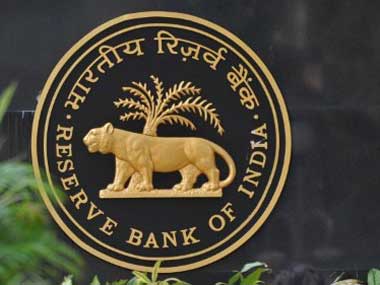MONETARY POLICY
The monetary policy is formulated by the central bank, i.e., RBI (Reserve Bank of India) and relates to the monetary matters of the country. The policy involves measures taken to regulate the supply of money, availability, and cost of credit in the economy.
The policy also oversees distribution of credit among users as well as the borrowing and lending rates of interest. In a developing country like India, the monetary policy is significant in the promotion of economic growth.
The various instruments of monetary policy include variations in bank rates, other interest rates, selective credit controls, supply of currency, variations in reserve requirements and open market operations.
Objectives of Monetary Policy
Promotion of saving and investment: the monetary policy controls the rate of interest and inflation within the country, it can impact the savings and investment of the people. A higher rate of interest translates to a greater chance of investment and savings, thereby, maintaining a healthy cash flow within the economy.
Controlling the imports and exports: By helping industries secure a loan at a reduced rate of interest, monetary policy helps export-oriented units to substitute imports and increase exports. This, in turn, helps improve the condition of the balance of payments.
Regulation of aggregate demand: Since the monetary policy can control the demand in an economy, it can be used by monetary authorities to maintain a balance between demand and supply of goods and services. When credit is expanded and the rate of interest is reduced, it allows more people to secure loans for the purchase of goods and services.
Generation of employment: the monetary policy can reduce the interest rate, small and medium enterprises (SMEs) can easily secure a loan for business expansion. This can lead to greater employment opportunities.
Helping with the development of infrastructure: The monetary policy allows concessional funding for the development of infrastructure within the country.
Types of Monetary Policy
Central
banks use contractionary monetary policy to reduce inflation. They reduce the
money supply restricting the volume of money bank can lend. The banks charge a
higher interest rate, making loans more expensive. Fewer businesses and
individuals borrow, slowing growth.
Expansionary
monetary policy to lower unemployment and avoid recession. They increase
liquidity by giving banks more money to lend. Banks lower interest rate, making
loans cheaper.
Businesses
borrow more to buy equipment, hire employee, and expand their operations.
Individual borrow more to buy more homes, cars, and appliances. That increases
demand and spurs economic growth.
Monetary Policy Tools
To control inflation, the Reserve Bank of India needs to decrease the supply of money or increase cost of fund in order to keep the demand of goods and services in control.
Quantitative Tools –
The tools applied by the policy that impact money supply in the entire economy, including sectors such as manufacturing, agriculture, automobile, housing, etc.
Reserve Ratio:
Banks are required to keep aside a set percentage of cash reserves or RBI approved assets. Reserve ratio is of two types:
Cash Reserve Ratio (CRR) – Banks are required to set aside this portion in cash with the RBI. The bank can neither lend it to anyone nor can it earn any interest rate or profit on CRR.
Statutory Liquidity Ratio (SLR) – Banks are required to set aside this portion in liquid assets such as gold or RBI approved securities such as government securities. Banks are allowed to earn interest on these securities, however it is very low.
Liquidity Adjustment Facility(LAF):
RBI use LAF as an instrument to adjust liquidity and money supply.
Repo Rate: It is the interest rate at which the Reserve Bank provides overnight liquidity to banks against the collateral of government and other approved securities under the liquidity adjustment facility (LAF).
Reverse Repo Rate: The (fixed) interest rate at which the Reserve Bank absorbs liquidity, on an overnight basis, from banks against the collateral of eligible government securities under the LAF.
Open Market Operations (OMO):
In order to control money supply, the RBI buys and sells government securities in the open market. These operations conducted by the Central Bank in the open market are referred to as Open Market Operations.
When the RBI sells government securities, the liquidity is sucked from the market, and the exact opposite happens when RBI buys securities. The latter is done to control inflation. The objective of OMOs are to keep a check on temporary liquidity mismatches in the market, owing to foreign capital flow.
Qualitative Tools:
Unlike quantitative tools which have a direct effect on the entire economy’s money supply, qualitative tools are selective tools that have an effect in the money supply of a specific sector of the economy.
Margin requirements – The RBI prescribes a certain margin against collateral, which in turn impacts the borrowing habit of customers. When the margin requirements are raised by the RBI, customers will be able to borrow less.
Moral suasion – By way of persuasion, the RBI convinces banks to keep money in government securities, rather than certain sectors.
Selective credit control – Controlling credit by not lending to selective industries or speculative businesses.


Comments
Post a Comment